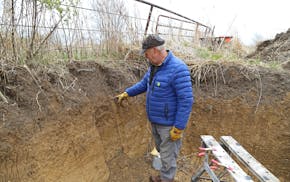Opinion editor's note: Strib Voices publishes a mix of guest commentaries online and in print each day. To contribute, click here.
•••
While Social Security and Medicare dominate the headlines about federal funding cuts that affect older people, we in Minnesota should bear in mind a longer list of threats to health care and social services statewide. Those who applaud the dramatic dismantling of federal agencies and programs may soon come to learn that few of us will be immune to adverse side effects.
- Federal Medicaid (Minnesota Medical Assistance) cuts will affect 5 out of 9 nursing home residents and 1 in 3 adults with disabilities. Medicaid cuts affect Medicare access too, as 1 in 7 Minnesota Medicare beneficiaries rely on Medicaid to pay for their premiums, copays, coinsurance and services like eyeglasses. Rural areas will be harder hit, as Medicaid enrollees make up a higher percentage of the population in many greater Minnesota counties than in the metro area (e.g., 28.1% in the northwest compared with 24.4% in the metro).
- Current federal funds to state Adult Protective Services (APS) cease in the Health and Human Services (HHS) budget proposed by Secretary Robert F. Kennedy Jr. In the last full year of posted data (2023), the state received 65,322 reports of suspected abuse, neglect and financial exploitation of vulnerable adults. The number of allegations in these reports totaled 84,860. APS provides lifelines, and in a time when financial exploitation, fraud and scams grow by the day, county agencies are already vastly underfunded.
- Social Services Block Grants are a less familiar federal program, yet Minnesota has received $1,780,750 in the last year to provide numerous services for vulnerable adults: meals, case management, chore services, transportation and APS.
- The Low-Income Home Energy Assistance Program is slated to be dropped altogether. These are the federal funds distributed to states to help people respond to threatened shutoffs of utilities by supplementing their costs. With Minnesota's weather extremes, utility costs can fast rise out of reach. Put another way, "Furnace or food?"
- Like APS, the federal Long-Term Care Ombudsman Program is gone in the HHS budget. Ombudsman staff and volunteers have offered advocacy for residents of nursing homes and other care facilities since 1972, a public service begun in President Richard Nixon's administration to stand up for individual rights and quality care in facilities. Residents without family or family nearby can count on an ally in the community through the ombudsman program.
- I would be remiss not to point out that both the ombudsman and APS funding and oversight have come from the Administration for Community Living (ACL) in HHS. These two well-established safeguards are only part of a longer list of aging programs to be cut (e.g. Preventive Health Services, Falls Prevention, Lifespan Respite, to name a few). According to the secretary's budget, the ACL will be erased, programs cut, and the remaining programs scattered among three other sectors. The secretary presents this as efficiency, but the reality is that these measures eviscerate the core of elder abuse prevention and response commitments that have been coordinated in ACL since 2012. Truth is that ACL was created to improve both efficiency and protection by merging the then Administration on Aging, Office of Disability and Administration of Developmental Disabilities. Stamp this one "Not Broken. Don't Fix."
- Lest we grasp for a bright spot and say that HHS may be severed, but we still have Department of Justice crime prevention programs, think again. Victims of Crime Act funding has been subject to pauses and reductions since 2021 despite congressional efforts to "fix" the problem that year and in 2024. Crime Victims Fund dollars come from fines, penalties and bond forfeitures in federal cases, not tax dollars. Yet those dollars keep declining because of changed outcomes in the kinds of cases that yield fund dollars. Meanwhile, federal grant funds for older and vulnerable adult crime victims through sources like the Office for Victims of Crime and the Office on Violence Against Women are gone. Just weeks ago, their websites identified dozens of competitive grants available in 2025. Those have all been withdrawn. Open notices of funding opportunities are zero.
This administration took office vowing to slash the federal budget while stating that basic needs and help for older people would remain intact. These seven examples illustrate that either their intentions were misrepresented, or they began this demolition without even basic understanding of how older people in every Minnesota county, and elsewhere, can and will be hurt.
Iris C. Freeman, of Minneapolis, is the founding chair and a former board member of the Minnesota Elder Justice Center and currently serves on the board of the National Adult Protective Services Association.

Burcum: A pair of 'big muddy boots to fill'
Opinion: 50 years after the fall of Saigon: A family's journey from Vietnam to the U.S.

Opinion: Federal lawmakers are failing older Minnesotans

Readers Write: Tariffs and the economy, Target, public health, Vietnam War

